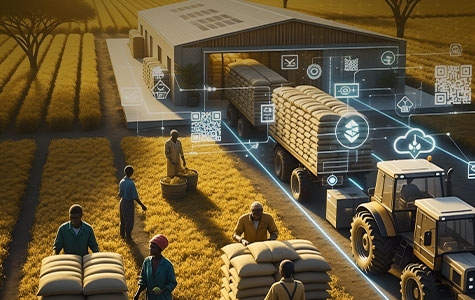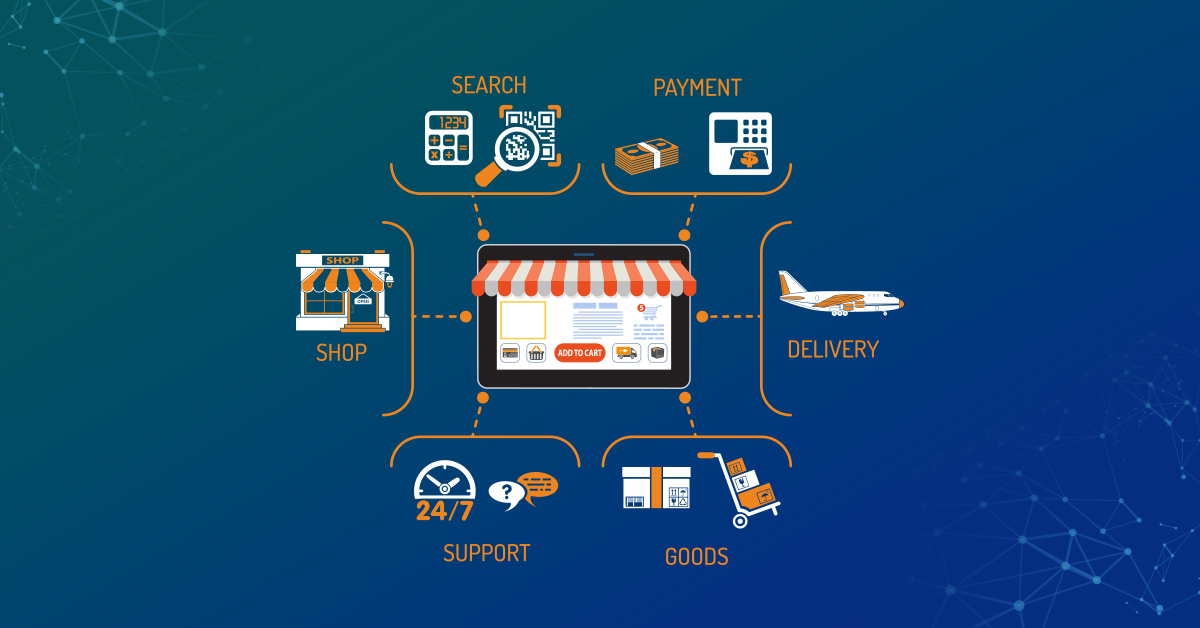Warehousing has long been the backbone of global trade, serving as a critical bridge between producers, suppliers, and markets. With the rise of digital transformation, traditional warehouses have evolved into Electronic Warehouse Systems (eWRS) - digitally integrated platforms that enable real-time inventory management, transparent stock monitoring, and seamless trade facilitation. Globally, the e-warehouse market is projected to reach USD 627 billion by 2030, growing at a CAGR of 14%, driven by the adoption of IoT, blockchain, and AI in supply chain management.
Countries like the U.S., China, and Brazil have been pioneers in leveraging e-warehousing for agricultural commodities. In India, the implementation of e-Warehouse Receipt Systems (eWRS) under the Warehousing Development and Regulation Authority (WDRA) has empowered farmers and traders by offering secure storage, financing options, and transparent trade. Similarly, Brazil’s agribusiness sector relies heavily on digital warehousing solutions for crops like soybeans and coffee, enabling efficient exports to global markets. These global success stories demonstrate that integrating technology into warehousing not only enhances efficiency but also fosters trust in agricultural value chains.
.jpg)
Global vs. African E-Warehouse Systems
While the global e-warehouse sector thrives, Africa is still in the early stages of adoption. In countries such as Kenya, Ethiopia, and Nigeria, warehousing infrastructure remains fragmented, with post-harvest losses estimated at 30–40%, largely due to inadequate storage and inefficient management systems. In comparison, developed economies report losses below 10% due to efficient e-warehouse practices.
Globally, e-warehouse receipts have become a key instrument for securing bank loans and facilitating commodity trading on exchanges. In Africa, however, only a few pilot projects have taken shape. For example, Ethiopia’s Ethiopian Commodity Exchange (ECX) has piloted warehouse receipt systems for coffee and sesame; however, scalability has been a challenge. Meanwhile, in East Africa, the African Development Bank and trade bodies are advocating for harmonized warehouse receipt systems to facilitate cross-border trade, although implementation varies significantly by country.
This contrast highlights the vast opportunity for Africa to leapfrog traditional inefficiencies and embrace technology-driven warehousing to enhance food security, stabilize prices, and integrate into global commodity markets.
Challenges Facing African E-Warehouses
Despite the potential, Africa’s e-warehouse sector faces numerous challenges:
- Inadequate Infrastructure: Poorly developed rural storage facilities result in high levels of food spoilage.
- Limited Digital Adoption: Many warehouses still operate manually, with little use of ICT for inventory or quality monitoring.
- Financial Barriers: Limited access to credit prevents smallholder farmers from using warehouse receipts as collateral.
- Trust Deficit: Lack of transparency in stock records erodes confidence among farmers, traders, and financial institutions.
- Policy Gaps: Regulatory frameworks for warehouse receipt systems are inconsistent, limiting cross-border trade and investment.
.jpg)
The Need for E-Warehouse Systems in Africa
The introduction of e-warehouse systems in Africa is not just an option; it is a necessity for transforming the agricultural and trade sectors. With agriculture employing over 60% of Africa’s workforce, ensuring efficient storage and trade mechanisms is critical for both livelihoods and food security.
E-Warehouse Systems can provide:
- Reduction in Post-Harvest Losses: Digital monitoring ensures stock preservation.
- Access to Finance: Farmers can use e-warehouse receipts as collateral for loans.
- Market Transparency: Buyers and sellers gain confidence through accurate, real-time inventory records.
- Integration with Commodity Exchanges: Enabling smoother, regulated trading of commodities across borders.
- Support for AfCFTA Goals: Aligning with the African Continental Free Trade Area (AfCFTA) vision of harmonized trade systems.
Countries like Rwanda and Kenya are already exploring pilots in warehouse digitalization. The need now is for scalable, interoperable platforms that address both local realities and continental aspirations.
Implementation of E-Warehouse Systems in Africa
For Africa, implementing e-warehouse systems means creating a digitally enabled ecosystem that integrates warehousing, financing, and commodity trading. Key implementation steps include:
- Digitizing Inventory – Leveraging IoT sensors and blockchain for tamper-proof tracking.
- Standardizing Warehouse Receipts – Ensuring receipts are legally recognized and tradable across markets.
- Public-Private Partnerships – Governments, banks, and tech providers must collaborate for sustainable rollouts.
- Training and Capacity Building – Farmers and warehouse operators must be trained on using eWRS tools effectively.
- Integration with Financial Systems – Linking warehouse receipts with banks for collateralized lending.
By adopting these strategies, Africa can accelerate the modernization of its agricultural sector while reducing trade inefficiencies.
.jpg)
CSM Tech’s Expertise in E-Warehouse Systems
CSM Technologies brings proven expertise in designing and implementing digital warehouse management ecosystems for the Warehouse Receipt System Council (WRSC) in Kenya, in collaboration with Trade Mark Africa (TMA) and the International Finance Corporation (IFC), and aims to establish an Electronic Warehouse Receipt System (eWRS) with a central registry. This initiative aims to streamline the licensing process for warehouse operators, collateral managers, and the management of warehouse receipt transactions.
Leveraging advanced ICT frameworks, CSM has developed systems that digitize the entire lifecycle of warehousing, right from stock intake and quality testing to issuance of warehouse receipts and integration with trading platforms. Drawing from this experience, CSM is well-positioned to support African nations in creating scalable, transparent, and secure e-warehouse ecosystems.
Conclusion & Way Forward
E-Warehouse Systems represent the future of agricultural trade, with the potential to reduce losses, improve farmer incomes, and boost Africa’s integration into global markets. Globally, e-warehousing has already proven its value in driving transparency, efficiency, and financial inclusion. For Africa, the need is urgent, as challenges in storage and trade continue to constrain agricultural growth.
With tailored solutions like those offered by CSM Technologies, African nations can overcome infrastructural, financial, and policy barriers to unlock the full potential of e-warehousing. The way forward lies in collaborative partnerships, investment in digital infrastructure, and a shared commitment to modernizing the agricultural sector.
CSM stands ready to be a strategic partner for Africa’s journey toward an inclusive, efficient, and technology-driven warehouse ecosystem, securing food, finance, and futures.










































We will verify and publish your comment soon.